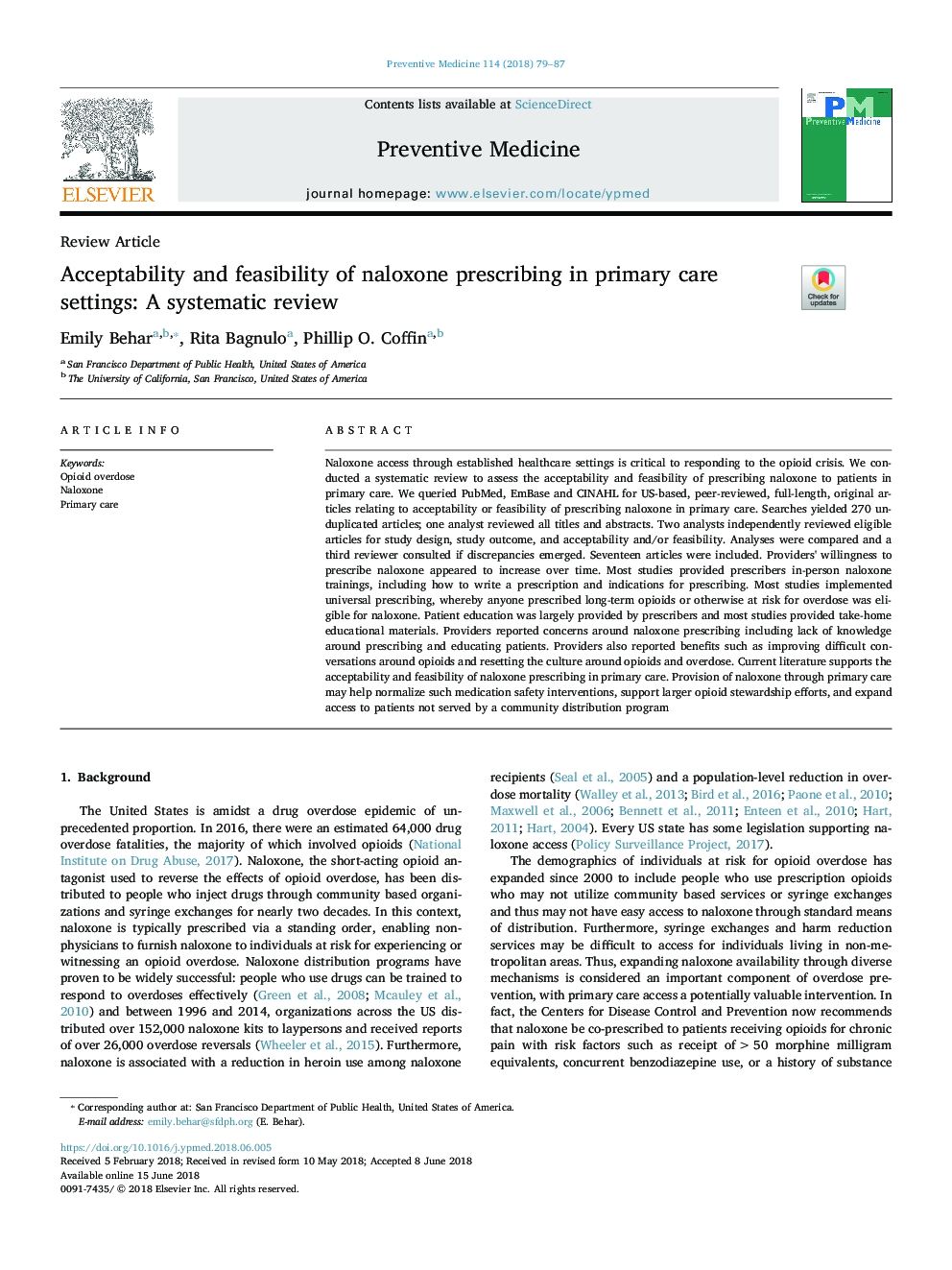| Article ID | Journal | Published Year | Pages | File Type |
|---|---|---|---|---|
| 8693423 | Preventive Medicine | 2018 | 9 Pages |
Abstract
Naloxone access through established healthcare settings is critical to responding to the opioid crisis. We conducted a systematic review to assess the acceptability and feasibility of prescribing naloxone to patients in primary care. We queried PubMed, EmBase and CINAHL for US-based, peer-reviewed, full-length, original articles relating to acceptability or feasibility of prescribing naloxone in primary care. Searches yielded 270 unduplicated articles; one analyst reviewed all titles and abstracts. Two analysts independently reviewed eligible articles for study design, study outcome, and acceptability and/or feasibility. Analyses were compared and a third reviewer consulted if discrepancies emerged. Seventeen articles were included. Providers' willingness to prescribe naloxone appeared to increase over time. Most studies provided prescribers in-person naloxone trainings, including how to write a prescription and indications for prescribing. Most studies implemented universal prescribing, whereby anyone prescribed long-term opioids or otherwise at risk for overdose was eligible for naloxone. Patient education was largely provided by prescribers and most studies provided take-home educational materials. Providers reported concerns around naloxone prescribing including lack of knowledge around prescribing and educating patients. Providers also reported benefits such as improving difficult conversations around opioids and resetting the culture around opioids and overdose. Current literature supports the acceptability and feasibility of naloxone prescribing in primary care. Provision of naloxone through primary care may help normalize such medication safety interventions, support larger opioid stewardship efforts, and expand access to patients not served by a community distribution program
Keywords
Related Topics
Health Sciences
Medicine and Dentistry
Complementary and Alternative Medicine
Authors
Emily Behar, Rita Bagnulo, Phillip O. Coffin,
